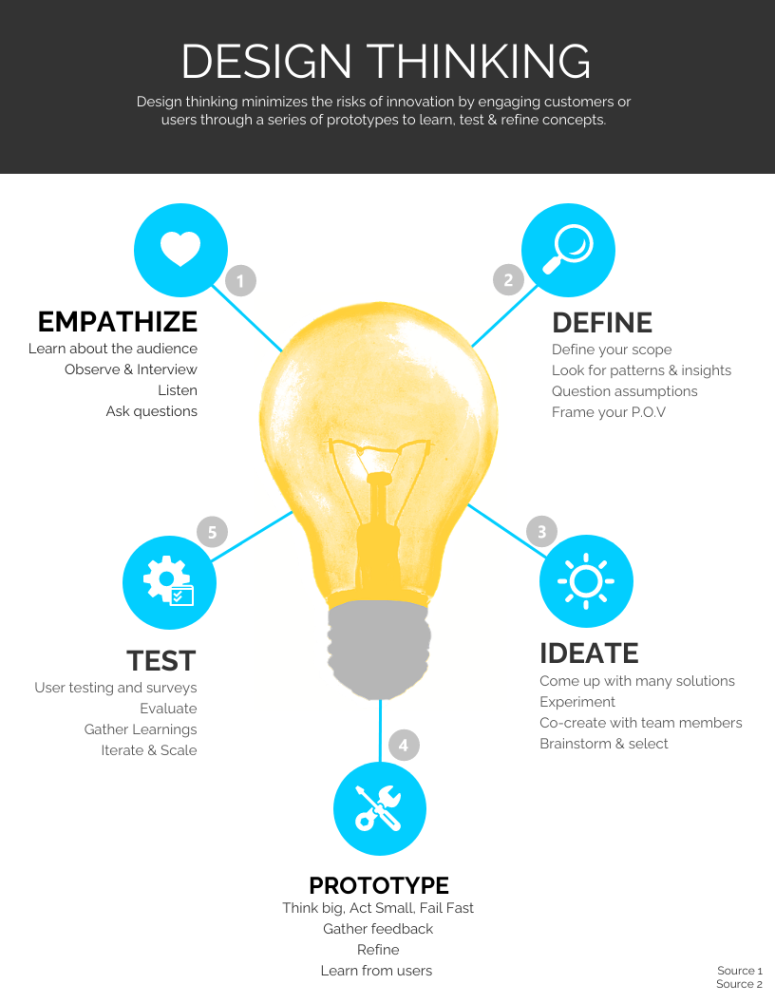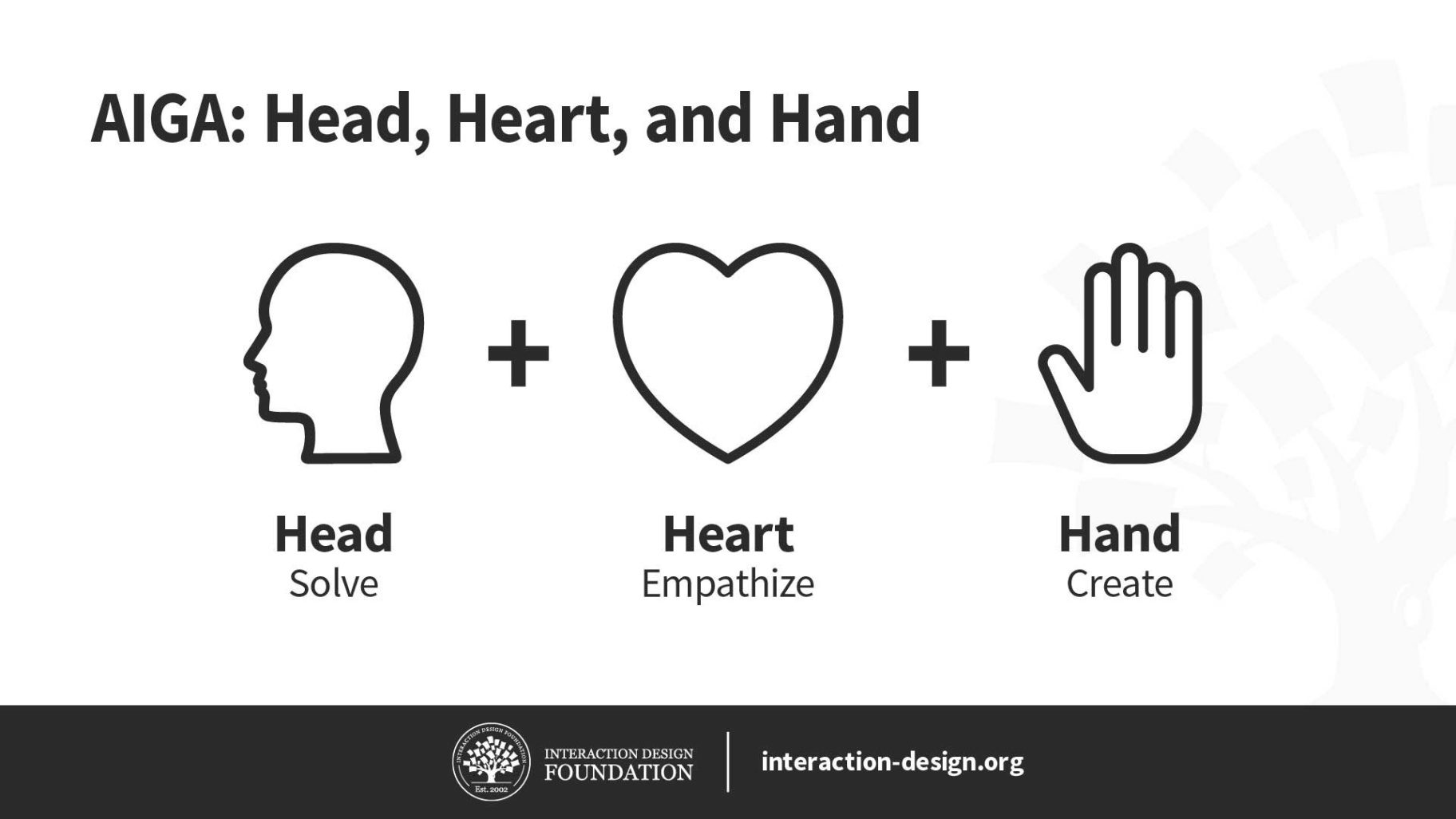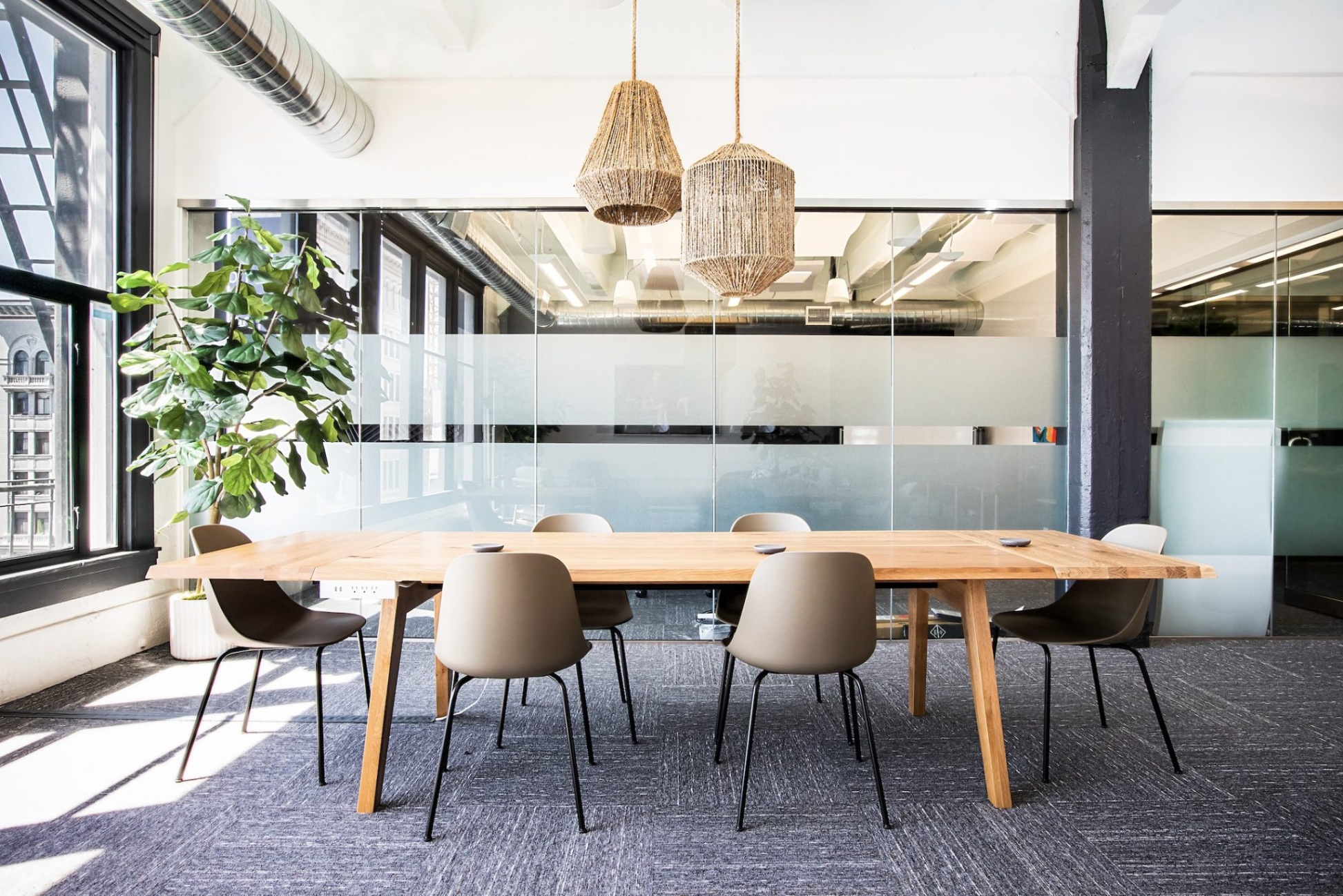Embrace the Possibilities of Design Thinking
In today’s fast-paced and ever-changing world, businesses and organizations are constantly seeking new ways to stay ahead of the competition and drive innovation. One powerful tool that has emerged as a key driver of success is design thinking. This approach combines the creative process of design with strategic thinking to solve complex problems, foster innovation, and create unique, customer-centric solutions.

Image Source: googleapis.com
Design thinking is all about embracing the possibilities. It encourages individuals and teams to think outside the box, challenge assumptions, and explore new ideas and perspectives. By tapping into the power of empathy, experimentation, and iteration, design thinking enables organizations to uncover insights and opportunities that may have otherwise been overlooked.
At its core, design thinking is a human-centered approach to problem-solving. It starts by understanding the needs, desires, and challenges of the end-users, and then uses this insight to inform the design process. By putting the end-user at the center of the design process, organizations can create products, services, and experiences that truly resonate with their audience.

Image Source: medium.com
One of the key strengths of design thinking is its ability to foster creativity. By encouraging individuals to think creatively, take risks, and embrace failure as a learning opportunity, design thinking inspires innovation and drives breakthrough ideas. This creative mindset is essential for organizations looking to stay competitive in today’s rapidly changing business landscape.
Strategic design is another crucial component of design thinking. By combining creativity with strategic thinking, organizations can ensure that their innovative ideas are aligned with their overall business goals and objectives. This strategic approach helps to prioritize ideas, allocate resources effectively, and ensure that the end result is not only creative but also practical and impactful.

Image Source: amazonaws.com
When creativity meets strategy through design thinking, the possibilities are endless. Organizations can unlock new opportunities, drive growth, and differentiate themselves from the competition. By embracing design thinking, businesses can stay agile, adapt to change, and continue to innovate in the face of uncertainty.
In conclusion, design thinking is a powerful tool that brings together creativity and strategy to unlock new possibilities and drive innovation. By embracing design thinking, organizations can tap into the power of creativity, empathy, and iteration to create unique, customer-centric solutions that set them apart in today’s competitive business landscape. So, don’t be afraid to embrace the possibilities of design thinking and unleash your creativity to create a better future for your organization.
Unleashing Creativity Through Strategic Design

Image Source: shortpixel.ai
When it comes to problem-solving and innovation, design thinking has become a powerful tool that combines creativity and strategy to unlock new possibilities. Design thinking is not just about creating aesthetically pleasing products or services, but it is a holistic approach that focuses on understanding the needs of users and finding innovative solutions to meet those needs. In this article, we will explore how strategic design can unleash creativity and drive success in various industries.
At the core of design thinking is empathy – the ability to put yourself in the shoes of the end-users and understand their needs, desires, and pain points. By empathizing with the users, designers can gain valuable insights that can lead to innovative solutions. Strategic design takes this a step further by not only focusing on the end-users but also aligning the design process with the overall goals and objectives of the organization.

Image Source: interaction-design.org
One of the key principles of strategic design is to approach problems from a multidisciplinary perspective. This means bringing together individuals with diverse backgrounds, skills, and perspectives to collaborate and co-create solutions. By leveraging the collective intelligence of a cross-functional team, organizations can generate more creative ideas and innovative solutions that address complex challenges.
Moreover, strategic design encourages a mindset of experimentation and iteration. Instead of seeking a perfect solution right from the start, designers are encouraged to prototype, test, and refine their ideas through an iterative process. This allows for quick feedback loops and enables designers to learn from failures and make improvements along the way.
Another important aspect of strategic design is the ability to think holistically and consider the broader impact of design decisions. Designers must take into account not only the immediate user experience but also the long-term implications on society, the environment, and the economy. By considering the bigger picture, designers can create more sustainable and ethical solutions that benefit all stakeholders.
In today’s rapidly changing business landscape, organizations that embrace strategic design have a competitive advantage. By combining creativity with strategic thinking, companies can differentiate themselves in the market, drive innovation, and create value for their customers. Strategic design enables organizations to stay ahead of the curve by anticipating trends, identifying opportunities, and adapting to change.
Furthermore, strategic design can be applied across various industries, from technology and healthcare to education and finance. For example, tech companies like Apple and Google have successfully integrated design thinking into their product development process, leading to iconic products that resonate with consumers. In the healthcare industry, design thinking is being used to improve patient experiences, optimize hospital workflows, and enhance medical devices.
In conclusion, strategic design is a powerful approach that unleashes creativity and drives success in today’s fast-paced world. By combining the principles of design thinking with strategic thinking, organizations can innovate, solve complex problems, and create meaningful experiences for their customers. Strategic design is not just about making things look good – it’s about making a positive impact and unlocking the full potential of creativity. So, unleash your creativity through strategic design and unlock new possibilities for your organization.
The Dynamic Intersection of Creativity and Strategy
In today’s fast-paced and competitive business world, companies are constantly searching for ways to stay ahead of the curve and drive innovation. One approach that has gained popularity in recent years is design thinking, a methodology that combines creative thinking with strategic planning to solve complex problems and create innovative solutions. At the heart of design thinking is the dynamic intersection of creativity and strategy, where ideas are transformed into actionable plans that drive success.
Creativity is the spark that ignites the design thinking process. It is the ability to think outside the box, to challenge the status quo, and to see things from a different perspective. Creativity is not limited to artistic expression; it is a mindset that embraces experimentation, risk-taking, and a willingness to fail in order to learn and grow. In the context of design thinking, creativity is the driving force behind ideation, brainstorming, and concept development. It is what allows teams to come up with innovative solutions to complex problems and think beyond the constraints of traditional thinking.
On the other hand, strategy provides the framework that guides creativity towards a specific goal or objective. It is the roadmap that outlines the steps needed to turn creative ideas into tangible outcomes. Strategy involves analysis, planning, and implementation, and it is what ensures that creative ideas are feasible, viable, and sustainable in the long run. In the context of design thinking, strategy is the glue that holds creativity together, providing structure and direction to the creative process.
The dynamic intersection of creativity and strategy in design thinking is where the magic happens. It is where ideas are transformed into reality, where dreams are turned into action, and where innovation flourishes. When creativity and strategy come together, they create a powerful synergy that drives success and unlocks the full potential of design thinking.
One of the key benefits of the dynamic intersection of creativity and strategy in design thinking is the ability to see problems from multiple perspectives. By combining creative thinking with strategic planning, teams are able to approach problems from a holistic viewpoint, taking into account various factors such as user needs, market trends, and business objectives. This multidimensional approach allows teams to come up with innovative solutions that address the root causes of problems and create value for all stakeholders involved.
Another benefit of the dynamic intersection of creativity and strategy in design thinking is the ability to iterate and refine ideas through experimentation and feedback. Creativity thrives on iteration, on the process of constantly refining and improving ideas until they reach their full potential. Strategy provides the discipline and structure needed to guide this iterative process, ensuring that ideas are tested, validated, and implemented in a systematic and efficient manner. This iterative approach allows teams to learn from their mistakes, adapt to changing conditions, and continuously improve their solutions over time.
In conclusion, the dynamic intersection of creativity and strategy is at the core of design thinking, where ideas are transformed into innovative solutions that drive success. By embracing creativity and strategy in equal measure, teams can unlock the full potential of design thinking and create value for their organizations and customers. So, let your creativity soar, but don’t forget to ground it in a solid strategic framework. The dynamic intersection of creativity and strategy is where the magic happens, where creativity meets strategy, and where innovation thrives.
Harnessing the Power of Design Thinking for Success
In today’s fast-paced and competitive business world, the need for innovation and creativity has never been greater. Companies are constantly searching for new ways to stay ahead of the curve and differentiate themselves from the competition. This is where design thinking comes into play.
Design thinking is a problem-solving approach that puts the user at the center of the process. It involves empathy, creativity, and a willingness to iterate and experiment. By harnessing the power of design thinking, companies can unlock new opportunities and drive success in ways they never thought possible.
One of the key aspects of design thinking is its focus on empathy. By putting yourself in the shoes of the user, you can gain a deeper understanding of their needs, wants, and pain points. This empathy-driven approach allows you to design products and services that truly resonate with your target audience, leading to increased customer satisfaction and loyalty.
Creativity is another essential component of design thinking. By encouraging a culture of creativity and experimentation, companies can break free from conventional thinking and come up with innovative solutions to complex problems. This creative mindset allows for out-of-the-box ideas and unconventional approaches that can propel a company to new heights.
But design thinking is not just about creativity – it also involves strategic thinking. By aligning creative ideas with business goals and objectives, companies can ensure that their innovation efforts are focused and impactful. This strategic approach allows for a more efficient use of resources and a clearer path to success.
When creativity meets strategy in the context of design thinking, the possibilities are endless. Companies can develop products and services that not only meet the needs of their customers but also drive business growth and profitability. By taking a holistic approach to problem-solving, companies can unlock new opportunities and create a sustainable competitive advantage.
In today’s digital age, design thinking has become more important than ever. With the rapid pace of technological advancements and changing consumer preferences, companies must be agile and adaptable in order to stay relevant. Design thinking provides a framework for navigating this complexity and uncertainty, allowing companies to innovate and evolve in response to changing market dynamics.
By embracing design thinking, companies can foster a culture of innovation and creativity that sets them apart from the competition. By putting the user at the center of the process, companies can create products and services that truly resonate with their target audience. By combining creativity with strategic thinking, companies can drive success and achieve their business objectives.
In conclusion, harnessing the power of design thinking is essential for success in today’s competitive business landscape. By embracing empathy, creativity, and strategic thinking, companies can unlock new opportunities, drive innovation, and differentiate themselves from the competition. Design thinking is not just a trend – it is a powerful tool for driving success and achieving sustainable growth in the digital age.
at the heart of design thinking is









